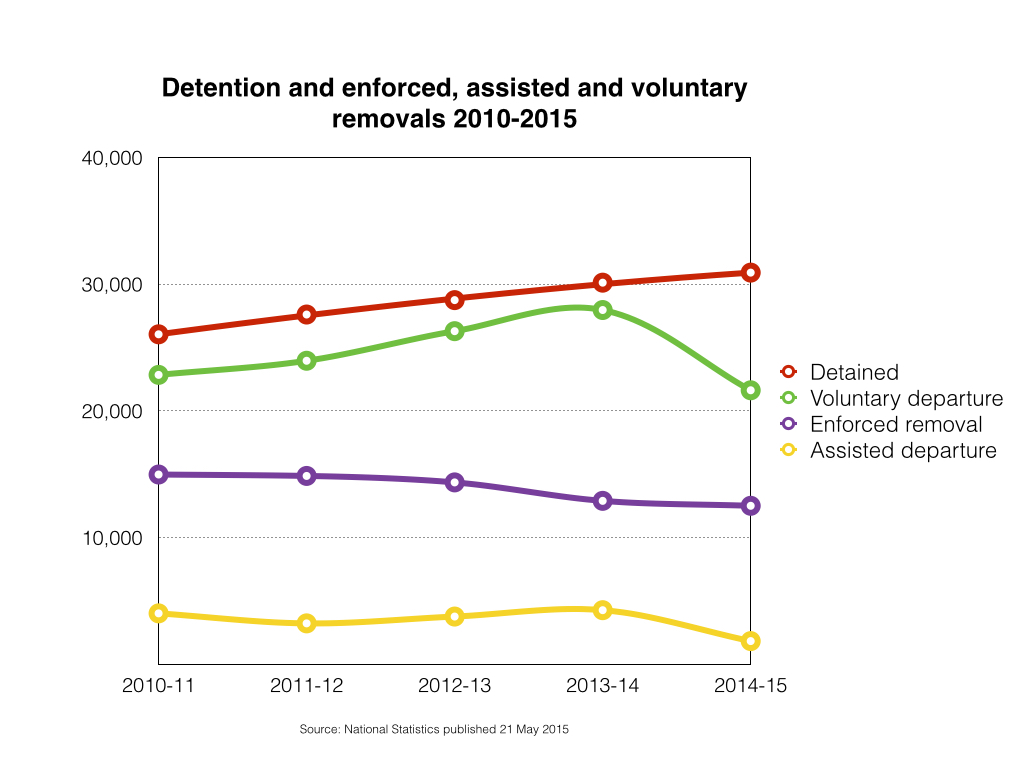- BY Paul Erdunast

Government anti immigration campaigns fuel public immigration concerns
THANKS FOR READING
Older content is locked

A great deal of time and effort goes into producing the information on Free Movement, become a member of Free Movement to get unlimited access to all articles, and much, much more
TAKE FREE MOVEMENT FURTHER
By becoming a member of Free Movement, you not only support the hard-work that goes into maintaining the website, but get access to premium features;
- Single login for personal use
- FREE downloads of Free Movement ebooks
- Access to all Free Movement blog content
- Access to all our online training materials
- Access to our busy forums
- Downloadable CPD certificates
At a time of escalating rhetoric by Ministers, with their language of invasion, inundation and insects, a new report by Mapping Immigration Controversy confirms that the main effect of the Government campaigns on immigration are fear and anger, not reassurance. Emotions are stoked not dampened.
Mapping Immigration Controversy has been running since 2013. It has delivered hard-hitting blog posts on such topics as the Yarl’s Wood detention centre and interviews with asylum seekers across the country on their perspective on the government initiatives. The linked briefing represents the conclusion of their project.
The report finds that the main effect of the Government campaigns have been anxiety in those who feel they are being targeted, and increasing fear and anger in those who worry that immigration is spiralling uncontrollably. Publicity such as the ‘Go Home’ messages on buses and Home Office tweets of immigration raids tends to increase worry about unequal treatment more than it reassures the public of the Home Office’s ‘tough but fair’ stance on immigration. On the other hand, local news stories about immigration raids and NHS posters stating that “NHS treatment is not free for everyone” did tend to have a reassuring rather than a troubling effect.
However, all of these measures caused some people to become more worried about irregular migration as a problem: 15% of people said the Go Home vans made them ‘concerned that irregular immigration might be more widespread than they had realised’; this was 14% for the NHS signs, 18% for local news stories, and 22% for tweets.
One unanticipated consequence has been the breadth of the pro-migrant response. People sympathetic to migrants who had not previously been involved in activism became involved in pro-migrant activism due to the Government publicity.
The anxiety caused by the campaigns is not helped by public confusion in the terminology of migration, including terms such as illegal immigrant, asylum seeker, worker, resident, and so on. The confusion has manifested itself in reports by members of minority groups, even if they are British citizens or are settled, reporting harassment for being ‘illegal immigrants’.
One response from a settled migrant in Bradford perfectly sums up the anti-immigrant hysteria that has been fostered by the Home Office campaigns:
“Where I live, there have been a few racist things going on, every time they’ve seen me they’ve always told me to go back to my country. But now imagine if they saw this and they know this has come from the Government… They won’t care to know whether I’ve got my stay or not … if I saw this van, even though I’ve got my stay and I know I’m safe, I would still feel very bad about it and thinking of where I’ve come from, what I’ve gone through, and the people who it affects.”
This report backs up the notion that the Government is not as interested in managing migration as managing media attitudes to it. A key case in point is the worrying rhetoric of swarms, marauding and tidal waves streaming from the lips of ministers and the press. Not only the callous rhetoric, but also the regressive policy announcements on cuts to asylum benefits, appear not to have any real effect on departures from the UK.
PM: MIGRANTS ARE INSECTS
Foreign Sec: MIGRANTS ARE BARBARIANS
Press: MIGRATION IS INUNDATION#wordsmatterhttp://t.co/ilCmY5SFMh
— Colin Yeo (@ColinYeo1) August 11, 2015
Back in the real world, though, while immigration detention (and with it, public funds spent on immigration detention) has steadily risen over the last five years, statistics for voluntary departure, enforced removal and assisted departure have reached a 5-year low. All figures for departures and removals in 2015 are lower than they have ever been since 2010 (source).

It appears that neither the media frenzy nor the government campaigns have led to significant numbers of migrants returning to their country of origin. This leads to the inescapable conclusion that these measures are about media management, not actual management of immigration enforcement. If so, it seems to be a matter of the Government capitalising on anti-immigrant feeling to increase its own popularity, taking the public attention away from cuts on spending. This, at the expense of making migrants, even those who are settled here, feel unwelcome and threatened.
See the full write-up of the project here, which includes full statistics detailing public opinion on immigration raids.
